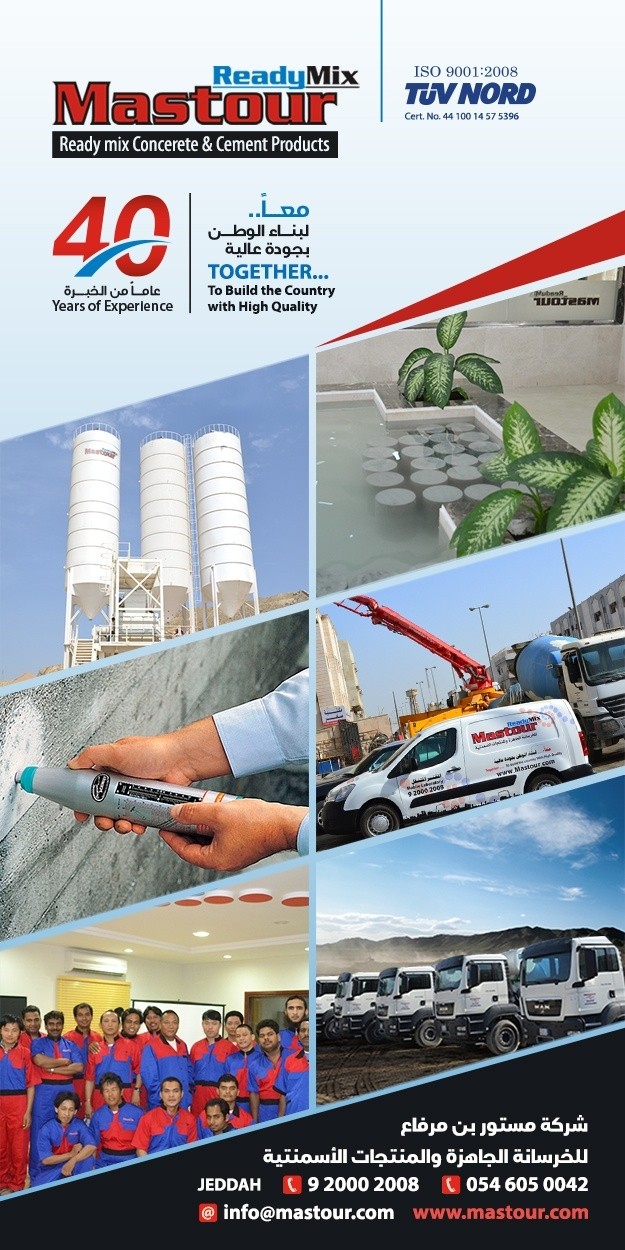Top 7 Ready Mix Concrete Quality Testing Methods in Saudi Arabia
What Is Ready-mixed Concrete Testing?
A ready mix concrete testing is done in Saudi Arabia to learn more about the features and uses of special kind of concrete. There are several types of tests that can be performed on ready mix concrete in Saudi Arabia. These tests are normally performed on a job site or in a cement laboratory. Because concrete is a vital substance for different structures, quality testing is necessary in many regions of the Kingdom of Saudi Arabia, and construction companies must fulfill legal requirements of their concrete material testing and results when asked to do accordingly by legislative authorities and government bodies. These concrete test results are kept on file in order to handle any difficult situation in the future. There are many different test methods for freshly made concrete in Saudi Arabia and almost all tests are carried for hardened concrete in the laboratories.
To determine the ready mix concrete quality testing on site, you must undergo quality tests. Here are 7 top ready mix concrete quality testing methods in Saudi Arabia:-
1. The Slump Test to Ensure Ready Mix Concrete Quality
Slump test is one of the most important tests to ensure the reliability, durability and consistency of freshly made concrete in a ready-mix concrete factory in Saudi Arabia. Therefore, the slump test is executed to check that a ready-mixed concrete is workable. The slump test for concrete quality checking must be done within a set range or from the targeted slump. The workability of ready mix concrete is primarily affected by uniformity. For instance, wetter mixes will be more effective and useful than drier mixes. However, ready-mixed concrete of the same constancy may fluctuate in workability. This is known as the relative plasticity of purely made concrete as pinpointing of its workability.

Usage of Tools and Equipment in Slump Test
In order to conduct a successful slump test, various types of tools and equipment are used, including Standard Slump Cone, Small Scoop and Rule. The standard slump cone can be made available to you in three sizes like 100 mm top diameter x 200 mm bottom diameter x 300 mm high. On the other hand, Small Scoop has a Bullet-nosed rod which is available on 600 mm long x 16 mm diameter. Thirdly the Rule has a slump plate pertaining to 500 mm x 500 mm. The procedure of slump checking for ready-mixed concrete includes cleaning the cone. Pour some water on the slump plate as it should be uncontaminated, durable, smooth and non-absorbent.
Slump Test Procedure
- Collect a few samples of ready mix concrete to conduct the slump test in the slump test laboratory.
- Pack 1/3 the quantity of the con with the sample and compress the concrete by means of rodding 25 times. What is rodding? Well, it means to thrust a steel rod both in and out of the concrete to compress it into the cylinder and slump cone.
- After that, it is important to fill to 2/3 and rod 25 times once again into the top of the second coating. Refill the cone until it pours out.
- Use a rolling action to smoothen up the surface along with steel rod.
- Clean up all the concretes from nearly the foundation and top level of the cone and then press down on the handles and step off the foot pieces. Make sure to lift the cone vertical
- ly and turn it reversed and place the rod across the reversed cone.
- Also make sure that batched concrete is adhering to the mix design before it is discharged from the batching plant.
2. The Compressive Strength Test to Check Concrete Quality
The Compressive Strength Test is done to check the compressive strength of hardened concrete in Saudi Arabia’s concrete and cement companies. The most significant advantage of compressive strength test is that it proves the best strength concrete which can reach in ideal situations. The compression strength test evaluates your ready-mixed concrete strength in the hardened condition. Therefore, strength concrete testing should always be done successfully as well as vigilantly. Wrong testing can result in extra money.
The compressive strength test is carried in any laboratory off-site. The only task accomplished on a job site is to make a concrete cylinder for the compressive strength test so that you could check the ready mix concrete quality. How do you measure the concrete strength in a concrete laboratory? Well, the strength is determined in Megapascals (MPa) and is commonly known as feature strength of ready-mixed concrete at 28 days after blending process. Hence, the compression test is a test of the ready mix concrete’s ability to resist loads which have a tendency to crush it.
Tools and Equipment for Compressive Strength Test
Several tools and equipment are used to test the concrete quality like from small scoops to Bullet-nosed rod (600 mm x 16 mm) and from steel floats to steel plates. Normally small types of cylinders are used for compression testing in a laboratory owing to their light weight feature. The cylinders are available in 100 mm diameter x 200 mm high or 150 mm diameter x 300 mm high.
Procedure for Compressive Strength Test
- First of all, it is very important to clean the cylinder moulds and coat the inside surface calmly with form oil. After that, place on a cleaner, level and smoothen up the steel plate surface. Then assemble a sample.
- Fill 1/2 the quantity of the mould with ready mixed concrete. Now compress the concrete by rodding 25 times. Cylinders can be also compressed by shaking using a vibrating table.
- Afterward, you should quickly fill the cone to spilling over and rod 25 times into the upper part of the first layer. Next, you should refill the mould till overflowing.
- Stabilize the top with the steel float and then clean any ready-mixed concrete from the mould.
- Put a ceiling on, tag the cylinder bluntly and keep it in a cool dry surface to set for no less than 24 hours.
- As soon as the mould is removed the cylinder is delivered to the concrete laboratory for testing purpose where it is cured and compressed to test compressive strength.
3. Water Permeability Test to Show Concrete Quality
When it comes to water permeability test, it is a very important test to determine the strength of ready-mixed concrete. Three cubes shall be determined and tested from freshly made concrete according to the German Standard DIN 1048 at 28 days age. The water permeability test shall be conducted by construction experts in order to evaluate various concrete elements like concrete water tanks, retaining walls, foundations and so on. Therefore, water permeability test is done to check the durability as well as longevity of ready-mixed concrete in Saudi Arabia.
4. Rapid Chloride Ion Penetration Test to Prove Concrete Quality
The rapid chloride Ion penetration test has the same function like water permeability test does. The rapid chloride Ion penetration test is done by the scientists in order to check the reliability, durability and worth of ready mix concrete. In this way, three cubes shall be used as a freshly made concrete sent to the job site and measured at 28 days age. This ready mix concrete test shall be conducted according to ASTM C1202-97. Hence, Rapid Chloride Ion Penetration Test helps engineers, scientists and futuristic builders to ensure the workability and durability of ready-mixed concrete in Saudi Arabia.
5. Water Absorption Test to Demonstrate Concrete Quality
Here is another important test that would help you to determine the ready-mixed concrete quality and durability. While conducting the water absorption test in a laboratory, three cube samples will be taken from the freshly made ready mix concrete and kept them it the curing tank for at least 28 days. Then these cube samples will be immediately sent to the official third party laboratory in Saudi Arabia to ensure its curing and durability. The size of cube sample is up to 150 mm and tested according to BS 1881-122.
6. Initial Surface Absorption Test to Improve Concrete Quality
In this test, three cube samples will be used as a fresh concrete and hence they will be sent directly on the job site. The cube samples will be cured and located inside the curing tank for at least 28 days. The initial surface absorption test is done in line with BS 1881-208. Hence, it determines the durability level of ready-mixed concrete in the scientific laboratory. This test is also done to determine ready mix concrete’s ability to resist chemical attacks, unfavorable weather conditions, oxidation, deterioration, deprecation, wear and tear and corrosion.
7. Column Segregation to Check Concrete Quality
This concrete testing method measures the static consistency of a concrete mixture by computing aggregate segregation. A column is filled with ready-mixed concrete and permitted to sit a moment after placement. The column is divided into three or four parts. Each part is removed separately and the concrete from that section is swamped. A non-segregating blend has a reliable aggregate mass distribution in each segment. A segregating mixture has high concentrations of aggregates in the lower segments. Hence, column segregation method is used to ensure ready-mixed concrete stability in Saudi Arabia.
To learn more about the ready mix concrete products and its quality testing methods, please go to www.readymix.sa, because this is the best directory in Saudi Arabia to find the list of top ready mix concrete suppliers in Jeddah, Riyadh, Dammam, Yanbu, Mecca, Medina, Jubail, Tabuk, Jezzan, Najran, Al-Qassim and many other cities.












